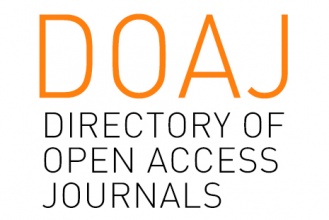Capacidade do ChatGPT, Deepseek e Gemini em prever as principais interações medicamentosas potenciais em adultos internados em Unidade de Terapia Intensiva
DOI:
https://doi.org/10.30968/jhphs.2025.161.1262Resumo
Objective: evaluate the ability of the ChatGPT v.3.5, DeepSeek v-3, and Gemini 2.0 flash to accurately predict major potential drug interactions (DIs) in critically ill patients. Methods: A list of 20 DIs was compiled from previously published literature. The Micromedex and Drugs.com databases were used as references. A specific prompt was designed to interact with the tools. The generated responses were stored for subsequent analysis by a pharmacist. Specificity, sensitivity, negative predictive value (NPV), positive predictive value (PPV), accuracy, and agreement were calculated for each tool based on the responses regarding DDI severity, which were categorized into five levels: contraindicated, major, moderate, minor, and no interaction. Additionally, the responses related to the mechanism of action and recommended management for each DDI were categorized as “adequate and accurate,” “adequate but inaccurate”, and “inadequate.” Results: When the Micromedex was used as a reference, ChatGPT performed better, achieving an accuracy rate of 75%, while DeepSeek and Gemini scored 70% and 65%, respectively. Overall, there was an improvement in the performance of all tools when Drugs.com was used as the reference, with accuracy rates of 80% for DeepSeek and 75% for both ChatGPT and Gemini. However, the agreement on the severity of DDIs between the tools and references was 0.354 (weak) for Drugs.com and 0.410 (moderate) for Micromedex. In general, two “inadequate” responses and 10 “adequate but inaccurate” responses regarding the mechanism of action and recommended management were observed when compared with Micromedex (14 DDIs analyzed), while eight “inadequate” responses and 21 “adequate but inaccurate” responses were found when compared with Drugs.com (17 DDIs analyzed). Conclusion: The tools analyzed show promise to assist healthcare professionals in predicting DDI in adults hospitalized in the intensive care unit (ICU). However, their use should be approached with caution, as they may generate incorrect/inaccurate information. Additional advancements are required to ensure their reliable application in clinical practice.
Downloads
Downloads
Publicado
Como Citar
Edição
Seção
Licença
Copyright (c) 2025 Autores

Este trabalho está licenciado sob uma licença Creative Commons Attribution 4.0 International License.
Os autores transferem, atribuem ou transmitem à JHPHS: (1) o direito de conceder permissão para republicar ou reimprimir o material indicado, no todo ou em parte, sem taxa; (2) o direito de imprimir cópias republicadas para distribuição gratuita ou venda; e (3) o direito de republicar o material indicado em qualquer formato (eletrônico ou impresso). Além disso, o abaixo assinado afirma que o artigo descrito acima não foi publicado anteriormente, no todo ou em parte, não está sujeito a direitos autorais ou outros direitos, exceto pelo (s) autor (es), e não foi enviado para publicação em outros lugares, exceto como comunicado por escrito para JHPHS neste documento.
Os autores mantêm os direitos autorais e concedem à revista o direito de primeira publicação com o trabalho licenciado simultaneamente sob uma Licença de atribuição Creative Commons Attribution (CC-BY) que permite que outros compartilhem o trabalho com um reconhecimento da autoria do trabalho e publicação inicial nesta revista.
Politica de Auto-arquivamento
Autores tem permissão e são encorajados a submeter o documento final em pdf dos artigos a páginas pessoais ou portais institucionais, após sua publicação neste periódico (sempre oferecendo a referência bibliográfica do item).








